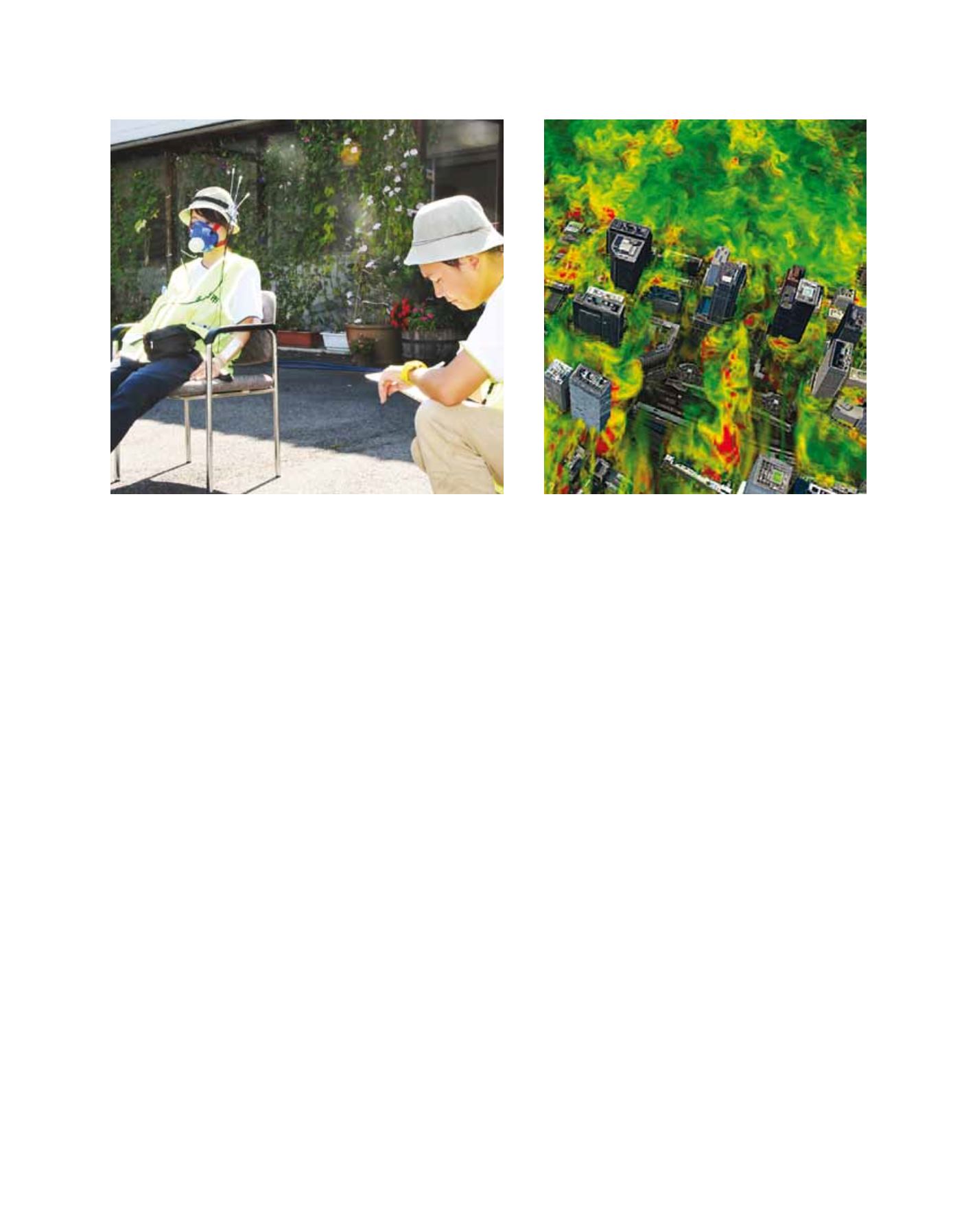

[
] 241
C
ommunities
pheric model to assimilate both carbon dioxide (a greenhouse
effect gas) and the pollutants. The system is expected to be used
for planning adaptation measures for the changing environment
with complicated factors of warming, air pollution and urbaniza-
tion in his subject area, Kanto region which includes Tokyo and
the other six prefectures.
Research sub-programmes – agriculture, forestry and fisheries
Professor Toshiki Iwasaki of Tohoku University is improving
experimental computational techniques in physical process and
developing data assimilation methods, to enable global warming
impact assessment and accuracy improvements in near- to mid-term
prediction for Yamase or winter monsoon in the Tohoku region, the
northern portion of Japan’s main island, particularly the Pacific side
of the Aomori Prefecture, Iwate Prefecture and Miyagi Prefecture.
Additionally, he is developing a high-degree downscaling applica-
tion for climate prediction and agro-meteorological data.
Professor Seishi Ninomiya of the University of Tokyo is develop-
ing a decision support system for optimal agricultural production,
to enable robust and stable activities and management. The goal is
to minimize climate change impacts for product quality, to opti-
mize cultivation and water resource management, and to consider
stable farm management, even with severe climate conditions or
long-term warming trends in his subject areas Toyama Prefecture,
Ishikawa Prefecture and Fukui Prefecture.
Professor Toshiyuki Awaji of JAMSTEC aims to develop both
the new integrated atmosphere-ocean-marine ecosystem data
assimilation system and the downscaling approach towards
better understanding and prediction of the linkage between
ocean/climate variations and biogeochemical and fishery envi-
ronments under global warming. This will be aimed at the level
of practical use for optimal fishery stock management and adap-
tive fishing operations with low cost and low carbon dioxide
emission, leading to sustainable fishery activity in
his subject area, the North Pacific Ocean offshore of
Aomori prefecture.
Even in the middle of the project, some local
governments have already used RECCA’s developed
technology and knowledge. For example, the distrib-
uted hydrological model developed by Professor Koike
was arranged and applied in the development plan
of cities in Tokyo, Hokkaido, and even the Pakistan
Government is trying to apply it. Nagano prefec-
ture relied on a future snow cover change projection
derived by Professor Kimura to compile a report on
impacts on the tourism industry in the prefecture;
even Nagano was out of his target area. Professor
Awaji has provided fishing ground forecast informa-
tion for fishermen, particularly those who suffered
serious damage by the great East Japan earthquake in
2011. The information enables them to save fuel for
fishing vessels and effective fishing. In order to expand
and facilitate such various applications of outcomes
and contribute to achieving a robust society in climate
change impacts, RECCA emphasizes dialogues with
local governments, stakeholders and citizens. As part
of this principle, RECCA held symposiums and work-
shops in the local areas as well as in Tokyo, and made
efforts to maximize the benefits from its outcomes.
Towards the completion of the programme in March
2015, RECCA is preparing to share its experience,
knowledge and technology, not only with the target
areas, but also with other regions wherever they are.
For more information, visit the RECCA website at
www.mext-isacc.jp/engDr Iizuka’s sub-programme conducted a survey on thermal environment and
human health in Tajimi city (near Nagoya)
Ultra high resolution urban climate model developed by
Dr Takahashi’s sub-programme
Image: RECCA
Image: Advanced Simulation and Technology Development Program, Earth Simulator
Center Japan Agency for Marine and Earth Science and Technology (JAMSTEC)
















